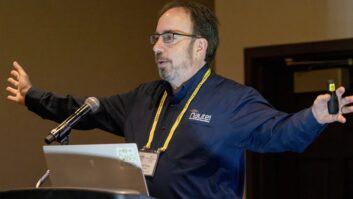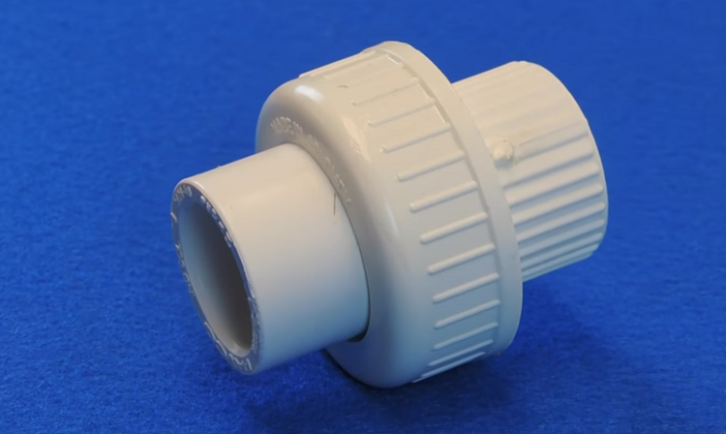
Bill Bowin, CSRE/CBNT, chief engineer at North American Broadcasting, writes that we’ve “beaten to death’” the topic of condensate drains over the last six months, but Bill has one more trick that he has used on rooftop units that he wanted to share.
Rooftop units may be located far from the roof drains and require a very long piece of PVC drain pipe.
Sometimes, installers don’t use glue so the PVC junctions can be disassembled and cleaned later. But Bill finds that this is not a good idea. Wind on the roof may move the long horizontal runs of PVC around, and, if the fittings are not glued, joints can pull apart.
An alternative to glue is to use pipe unions, so the drains can be taken apart, cleaned and reassembled. Bill provided a closeup of the junctions at one of his sites; note each section can be easily removed.
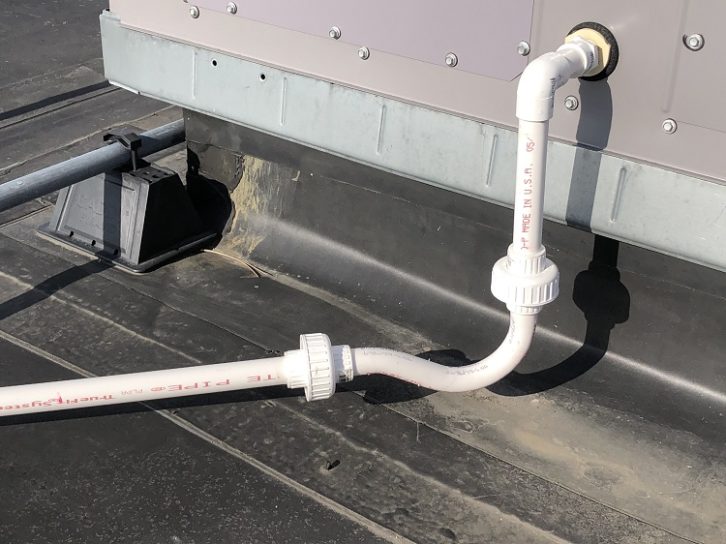
You’ll also find a number of online videos on this subject from manufacturers like Flexible PVC.
Nifty sensor
Consulting engineer and frequent Workbench contributor Frank Hertel of Newman-Kees RF Measurements & Engineering spotted this interesting device.
The SensiML is a sensor tile that can be affixed to a fan or motor. It’s a predictive maintenance device that gives a condition readout on a smartphone.
Watch a very interesting demo of it at https://youtu.be/qad5dFzqdI8.
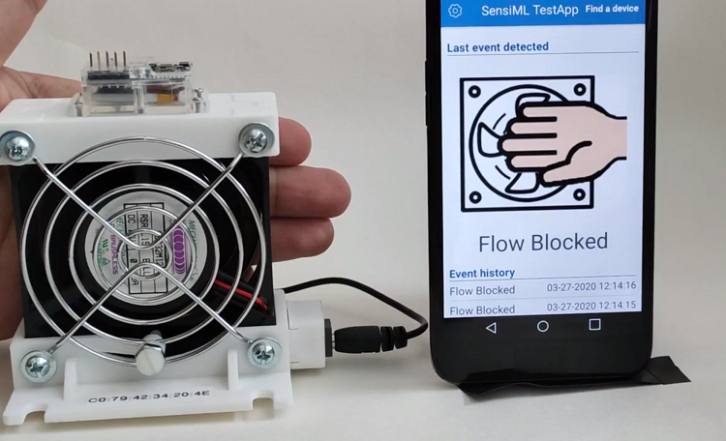
Using the sensors in the battery-powered STMicro SensorTile, which is mounted atop the fan, SensiML shows how its AutoML software can produce autonomous predictive fault models. The device’s sensing algorithms can be built by developers with little to no data science expertise using the SensiML Analytics Toolkit.
Remember the failed blower fan on the BE transmitter that was causing overheating, discussed in the Feb. 17 issue? A sensor such as this, mounted on each fan, would alert the engineer of failure, loose mounting or blade obstruction.
Visit https://sensiml.com/products for more information. A headline on that page gives a sense of their purpose: “Transform your IoT device from merely connected to truly intelligent.”
Seeking slip-ups
Louis Judson was the first of many to respond to our question about a flaw in the Seekers’ Abbey Road video discussed in the Feb. 17 issue.
Louis, who works as an audio engineer for Intuitive Audio in the Bay Area, notes that the percussion is not in the room and apparently not on the multi-track either.
He also noted the interesting mic position on Judith Durham. “Assuming it is side address, why have the mic below her and pointing up? That would invite ‘plosives’ — better above the singer, pointing slightly down.”
But what was the “flaw” I referred to? Louis spotted it as well. Watch when the engineer starts the Ampex recorder. He presses what appears to be the “stop” pushbutton and doesn’t depress the “record” pushbutton.
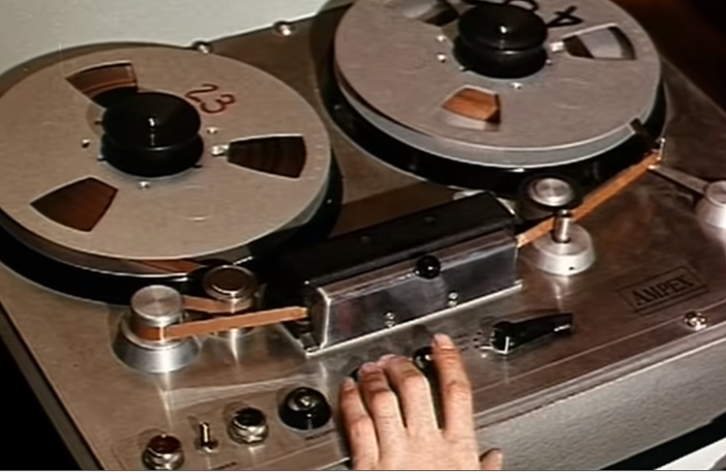
Okay, picky-picky! Still a fun video to watch.
John Bisset has spent over 50 years in the broadcasting industry and is still learning. He handles western U.S. radio sales for the Telos Alliance, holds SBE CPBE certification is a past recipient of the SBE’s Educator of the Year Award. Workbench submissions are encouraged and qualify for SBE recertification. Email [email protected].




